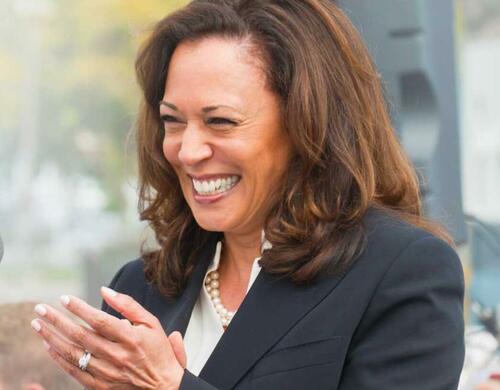
Harris And The Bouncing Balloon Campaign
Authored by Sean Trende via RealClearPolitics,
We all know that this election will be different than any other election we’ve had in recent decades – how could it not be? This is a 100-day campaign through Election Day, and a 45-day campaign until early voting begins. The dynamics are fundamentally different than your average modern campaign.

I’ve been struggling to characterize exactly how the dynamics animating this campaign are different. What I’ve come up with is this: This campaign is a lot like the old kids’ game of “don’t let the balloon touch the ground.” In the event you aren’t familiar with that competition, the rules of the game are remarkably straightforward: Kids bounce a balloon around, and they do so until the balloon touches the ground. In the long run, kids can’t really win the game, as gravity inevitably wins out. But if the goal is to pass time while parents pull together some last minute aspect of the party, the kids can theoretically win.
Right now, Kamala Harris is in her honeymoon phase. She’s been elevated from the vice presidency to presumptive Democratic nominee. This has been accompanied by an improvement in her job approval as she rides a groundswell of good press and has the opportunity to re-introduce herself to the American public. Her stock has risen accordingly.
At the same time, she is probably too far to the left to win a general election. She hasn’t really shown Barack Obama’s knack for knowing when he needed to hedge his position or even rule out something to his left because it would alienate a key electoral constituency. To be sure, there are people who don’t really believe that “too far left” is a category that exists (a lot of people on the right believe something similar); if you’re one of them then the entire frame of this article and theory of the campaign are incorrect. But within that frame, having the election turn to a referendum on Harris’ positions and record, which really have been on the left flank of the Democratic Party, is the equivalent of the ball touching the ground. If those positions are what the election is about, her path to victory becomes much more complicated.
As I’ve written before, I don’t think Harris is probably viable over the course of a year-long campaign. There’s a reason she was polling at 3% (barely ahead of Andrew Yang) in the 2020 Democratic primary when she dropped out.
She doesn’t have to run a year-long campaign, though. As it turns out, events line up in the political calendar in such a way that it really is possible to keep the balloon bouncing. Consider: Harris will almost certainly pick her vice presidential candidate this week. She has a large number of attractive choices from which to select, which will earn her another week or two of positive press.
That gets us to mid-August, when the Democratic National Convention begins. It will likely be a carefully scripted, well-managed event. There’s little doubt that Barack Obama, Bill Clinton, and Hillary Clinton will all deliver well-crafted prime-time addresses to rally the party behind its new nominee, as will Harris and her running mate. She might not receive a bounce, since she’ll still be in her honeymoon phase, but the balloon will be saved from the floor once again.
Then, in mid-September, Trump will be sentenced following his conviction in the New York fraud/hush money case. Regardless of whether or not he receives jail time, it’s another distraction from any substantive discussion of the issues in 2024. The attention is diverted from Harris and falls on Trump in a relatively unflattering light. The ball is kept off the ground again; the election actually shapes up as a referendum on Trump at this point.
At that point, we begin to vote. With extended early voting timelines, Pennsylvania starts voting in mid-September, followed by Minnesota, New Mexico, and Virginia starting a few days later. At the beginning of October, Arizona, Georgia, and Ohio start accepting ballots.
In short, we can’t think of this campaign as a traditional campaign. It’s a sprint, and a shorter sprint than people acknowledge. Harris might not be able to keep the ball bouncing through November, but she might not have to. Events are lining up to at least keep things going through a sizeable chunk of what has now become an election season.
Sean Trende is senior elections analyst for RealClearPolitics. He is a co-author of the 2014 Almanac of American Politics and author of The Lost Majority. He can be reached at [email protected]. Follow him on Twitter @SeanTrende.
Tyler Durden
Fri, 08/02/2024 – 09:00

 1 rok temu
1 rok temu







![116 krzewów konopi i 820 gramów marihuany! 48-latek trafił do aresztu! [ZDJĘCIA, WIDEO]](https://www.eostroleka.pl/luba/dane/pliki/zdjecia/2025/kmp_ostrow_maz_2.jpg)


![Ponad 3,5 tys. policjantów na Warmii i Mazurach. "Zainteresowanie służbą rośnie" [ZDJĘCIA]](https://static.olsztyn.com.pl/static/articles_photos/44/44842/dc85e0514d67d7030089df44db1a1f22.jpg)


